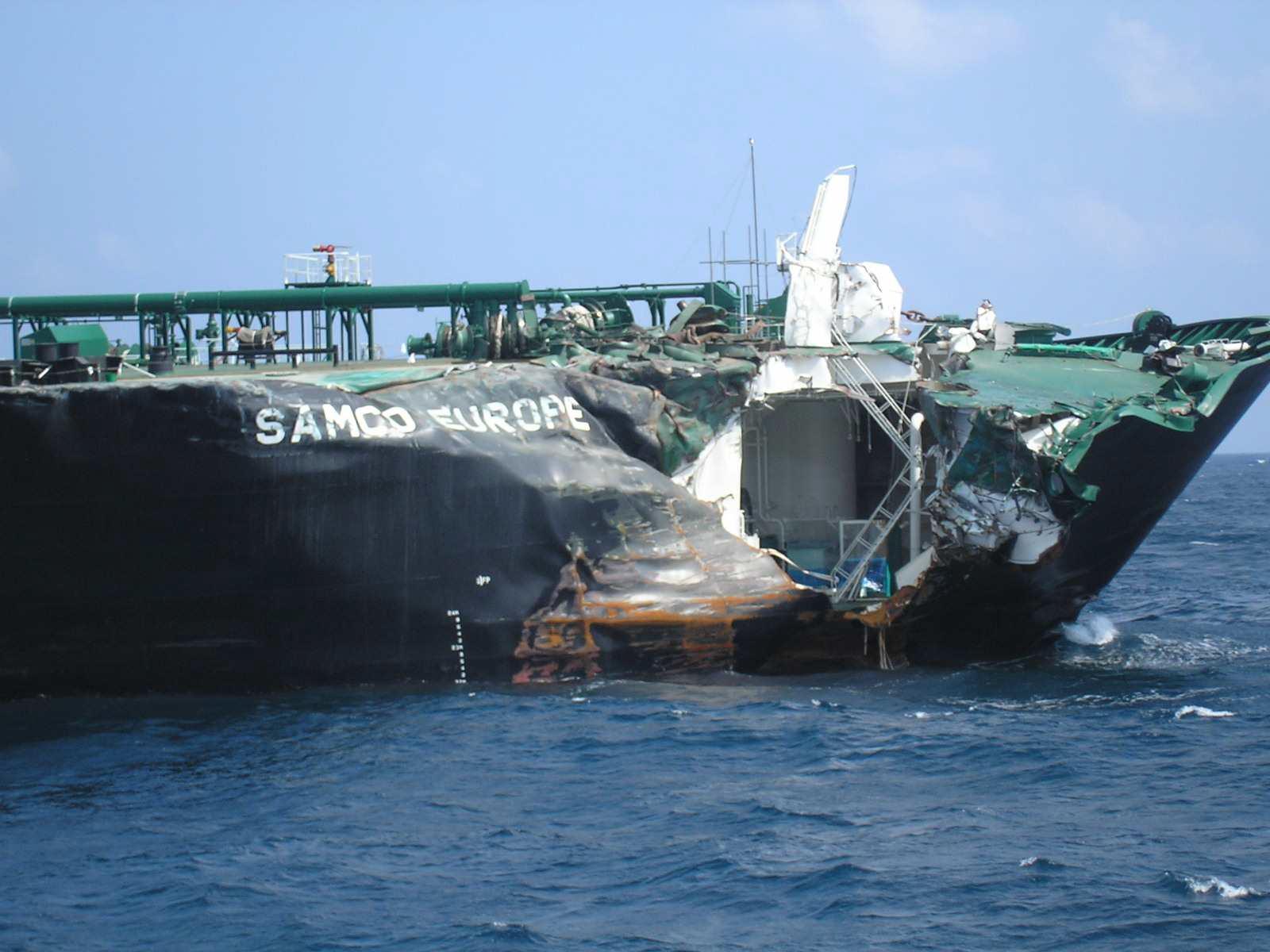Collision at Sea: What the Courts Say
In this series of articles, Harry Hirst of Ince & Co considers how various court cases involving collisions have provided practical guidance to duty officers (OOW) and Masters for collision avoidance. A common theme is the use of time by the OOW.
The first article addresses the importance of early detection and appraisal of the situation.
Collisions – Common Failings
Negligent navigation comes in many forms, but the underlying cause of collision in most cases – and certainly from a legal standpoint – can be categorised generally as:
1. Poor lookout.
2. Inappropriate avoiding action.
It is usually the case in a collision at sea that the duty officer (OOW) has failed to make a full appraisal of the situation and the risk of collision; or if he has done so, that he has failed to take appropriate avoiding action. Indeed, a poor lookout often results in the OOW taking inappropriate avoiding action.
In this article we will examine what the courts have to say about lookout and appraising the risk of collision. In particular, we focus on the importance of timing and the use of time in avoiding collisions.
Poor Lookout
Rule 5 of the COLREGS provides –
“Every vessel shall at all times maintain a proper lookout by sight and hearing as well as by all available means appropriate in the prevailing circumstances and conditions so as to make a full appraisal of the situation and of the risk of collision.”
The key to a proper lookout is the ability “to make a full appraisal of the situation and of the risk of collision.”
Full Appraisal
A full appraisal of the situation means an understanding of what is happening: whether the other vessel is head-on, crossing or overtaking and in congested waters where there are several other vessels, what those other vessels are doing.
A full appraisal of the risk of collision means an understanding of both the closest point of approach (CPA) and the time to closest point of approach (TCPA) of the other vessel and whether she is passing to port or to starboard, or crossing ahead or astern.
A full appraisal takes time. Timing is vital.
Time – Early Detection
As Mr Justice Sheen said in in The Oden [1989] 1 Lloyd’s Rep. 280 –
“The greater the distance at which an approaching ship is detected the greater is the chance of making a proper appreciation of the situation and of avoiding a close quarters situation.”
 With a proper lookout, the presence of the other vessel will be detected early. Collisions are still happening today where one vessel has failed to detect the presence of the other vessel at all, or only very shortly before the collision. Obviously, this leaves little or no time to appraise the situation and take action.
With a proper lookout, the presence of the other vessel will be detected early. Collisions are still happening today where one vessel has failed to detect the presence of the other vessel at all, or only very shortly before the collision. Obviously, this leaves little or no time to appraise the situation and take action.
Rule 7 of the COLREGS provides –
“(b) proper use shall be made of radar…including long range scanning to obtain early warning of risk of collision and radar plotting…”
There is no excuse for such failures with all the modern navigational equipment at the OOWs disposal, including radar and AIS.With the proper use of such equipment, the presence of the other vessel can and should be detected early.
Time – Determining the Risk of Collision
If you have detected other vessels early, this should allow time to determine the risk of collision.
Early detection is of little benefit if it is not accompanied with proper radar plotting and a determination of the risk of collision. The time gained by early detection needs to be used to good effect.
As the Court of Appeal observed in The Homer [1973] 1 Lloyd’s Rep 501, a proper lookout –
“…. involves not only a visual look-out, and not only the use of ears but it also involves the intelligent interpretation of the data received by way of … various scientific instruments.
Sadly today, some OOWs are still failing to plot the movements of another vessel as soon as they have detected it. Their focus is elsewhere, on other vessels or matters, or they decide to wait until this other vessel is closer before doing any plotting or acquiring her target on the ARPA.
Don’t Forget to Look Out of the Windows
Sadly also, some OOWs have a tendency, having acquired and plotted the other vessel, to rely exclusively or too heavily upon what they can see on their electronic navigation aids, taking no or little account of what is going on outside the bridge. As Mr Justice Teare said in The Samco Europe [2011] 2 Lloyd’s Rep 579 –
“The extensive navigational aids now available to mariners are capable of providing much information, but safe navigation also requires … a good visual lookout.
Looking out of the windows should greatly assist in your appraisal of the situation.
Under Time Pressure? Slow Down
Rule 8 of the COLREGS provides –
“If necessary to avoid collision or allow more time to assess the situation, a vessel shall slacken her speed or take all way off by stopping or reversing her means of propulsion.”
It is still often the case that OOWs are reluctant to slow down. Failure to do so results in a rushed and inadequate appraisal of the situation and of the risk of collision.
Justice Sheen underlines the importance allowing time to think in The Roseline [1981] 2 Lloyd’s Rep.411.
“Both vessels were at fault for proceeding at a speed substantially in excess of a safe speed, and both vessels were at fault for allowing a close quarters situation to develop. I regard these as serious faults because they are breaches of the regulations committed at a time when there was or should have been plenty of time to consider carefully what action ought to have been taken.”
Timing is also an important factor when it comes to taking avoiding action, which is the subject of the second article in our series.
Think about how you keep your watch – are you detecting vessels early enough in order to have time to appraise the situation?
Harry Hirst
 Harry Hirst is a Partner and Master Mariner in the Singapore office of Ince and Co. Harry has more than twenty five years’ experience advising ship owners, P&I Clubs and hull underwriters on their maritime casualties. A former Deck Officer on tankers ranging from 3,000 to 300,000 tonnes deadweight with Mobil Shipping Company, he speaks and understands the language of mariners and those involved in the industry.
Harry Hirst is a Partner and Master Mariner in the Singapore office of Ince and Co. Harry has more than twenty five years’ experience advising ship owners, P&I Clubs and hull underwriters on their maritime casualties. A former Deck Officer on tankers ranging from 3,000 to 300,000 tonnes deadweight with Mobil Shipping Company, he speaks and understands the language of mariners and those involved in the industry.
Image: Damage to the Samco Europe following collision with MSC Prestige

 , you have now set your site language to English. If you'd like to change your language preference again, simply click on one of the other flags.
, you have now set your site language to English. If you'd like to change your language preference again, simply click on one of the other flags. を選択して頂くと、言語設定が日本語に切り替わります。設定変更後は以下の機能が利用可能です。
を選択して頂くと、言語設定が日本語に切り替わります。設定変更後は以下の機能が利用可能です。
 ,可将网站语言设置为中文。这能帮助您:
,可将网站语言设置为中文。这能帮助您:


